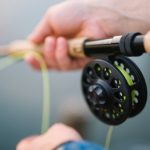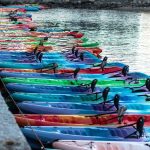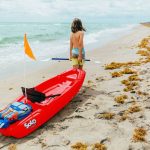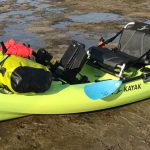In this article, we’ve got all the information you need to decide on the optimal kayak size. Discuss kayak sizes like a pro!
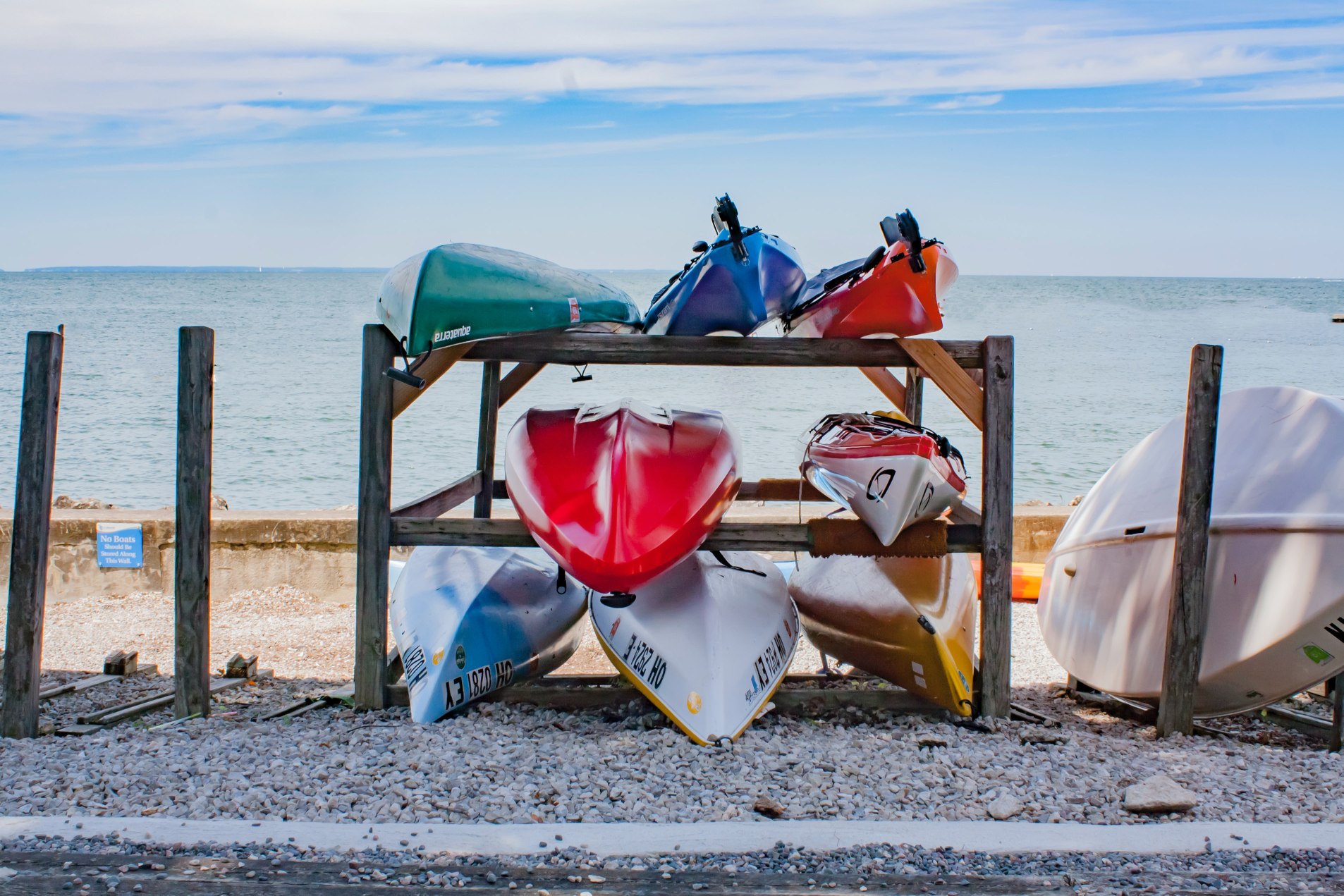
A kayak can cost anywhere from under a hundred dollars for the cheapest models up to $5K+ for high-end, motorized vessels. Why such a huge price difference? We’ve analyzed kayak prices to find out.
So, you’ve been out paddling in a rented/borrowed kayak and fallen in love with it?
Welcome to the club!
There are few things more delightful than spending time out on a lake, river, sea, or ocean, with the sun bright above you and nothing but water all around.
Buying a kayak is an investment you won’t regret, one that will bring you joy for years to come—maybe even the rest of your life!
But before you head out to the nearest sports gear store, it’s important that you know a few things.
In this article, we’ll look at how much is a kayak, take a closer look at what affects the cost of kayaks, the average cost of various types of kayaks, and a few other factors to consider when kayak shopping.
By the end of this page, you’ll know everything there is to know about how to buy the perfect kayak for you, and how much to be prepared to spend.
Biggest Factors Affecting Cost
First off, let’s take a look at a few of the factors that determine how much you’ll spend.
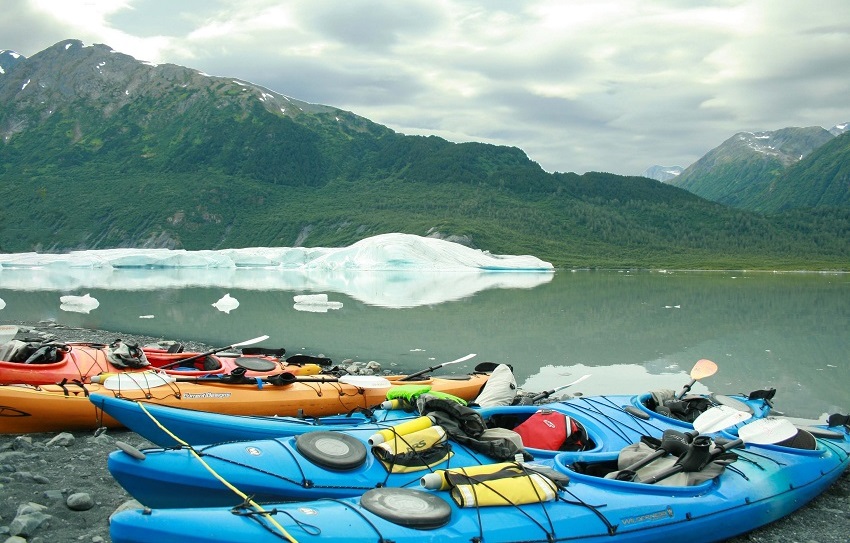
Materials
There are a number of materials utilized to build kayaks, and each will have a varying cost range.
Plastic – Plastic is, no surprise, the cheapest material for kayaks. Typically, plastic is either thermomolded (ABS plastic sheets that are heated and pressed into a mold) or rotomolded (liquid plastic poured into a mold). Sometimes the plastic kayaks will be made of a single piece of plastic, while at other times, the hull will be formed of two pieces of plastic joined together.
Fiberglass – Fiberglass is typically used to make very lightweight, speedy kayaks—for example, sea touring kayaks and racing kayaks. The material is fast, responsive, and tough, though it doesn’t stand up to direct hull impacts as well as some of the other materials.
Fiberglass is notably pricier than plastic, especially when you get into fiberglass composites (see below). Multiple layers of fiberglass are laid atop each other and allowed to dry, resulting in a very stiff hull that can slice through the waters with impressive speed.
PVC – PVC is a material typically used for inflatable kayaks. The polymer is cheaper even than plastic but tough enough that it can handle direct impacts without breaking or tearing. It’s more susceptible to UV damage (from the sunlight), however, so you have to take greater care with PVC kayaks to shield them from the sun and store them in a dark, dry place.
Wood – Wood was the material first used to build kayaks, and it’s still used to this day. Typically, wooden kayaks are built using a stitch-and-glue process or strip-building process. They’re often finished with varnish, resin, and fiberglass to ensure maximum waterproofing on the exterior.
Most wooden kayaks are DIY projects handmade by kayak enthusiasts, but you can find a few for sale online. They tend to be painstakingly crafted and lighter-weight than composite kayaks. However, they’re far rarer and can cost more (unless you buy a DIY kit to build yourself). They’re also not as sturdy and can’t handle as much damage in whitewater conditions.
Composite Materials – Composites are a mixture of materials—for example, fiberglass, carbon fiber, Kevlar, and aramid—that are applied in multiple sheets and allowed to dry. The result is a very tough, stiff hull that is incredibly speedy, hence their use in racing and sea touring kayaks. However, no surprise, this is among the most expensive material; you’ll pay anywhere from 200% to 1000% more for one of these kayaks than you would a plastic or PVC kayak.
Design

Certain kayak designs cost more for two reasons:
1) They require more materials. For example, a sit-on-top fishing kayak requires more material to build than a sit-inside kayak, because the hull needs to be fully sealed to ensure it’s waterproof. Or a racing kayak tends to have a longer body that requires more material to construct than an ultra-compact whitewater or short recreational kayak.
2) They are more labor-intensive. Certain materials are more labor-intensive to assemble into a kayak (for example, laying the multiple layers of composite material is more demanding than simply pouring melted plastic into a mold). However, the design of the kayak may also require more time invested into the assembly/construction process because of specific details in the hull or deck contours.
Brands Matter
Many brands pride themselves in offering kayaks priced for everyone—from casual users to experts and professionals. They offer budget-friendly models that are sold in stores like Costco and Walmart (and in Canada, Canadian Tire) and priced low enough that even newbies will be happy to pay a few hundred bucks for them.
These brands include Pelican, Intex (for inflatables), Sun Dolphin, Lifetime, and some others. Typically, they utilize cheaper processes (usually thermoformed polyethylene for hardshell kayaks and vinyl for inflatables) to produce kayaks great for recreational use on calm water but aren’t up for the rigors of whitewater, kayak fishing, sea touring, or more adventurous kayaking.
Some brands—like Perception or Wilderness Systems—pride themselves on offering mid-range kayaks that are affordable enough for enthusiasts but are sturdy enough that experts won’t treat them as “starter kayaks”. They utilize higher quality materials and back their kayaks with longer warranties. They also have higher-end and premium-priced products, but they include a few well-priced offerings for those who are shopping on a lower budget.
Then you have the upper-end brands that only cater to those with a high budget. Hobie, Eddyline, TRAK, ORU, and Delta are a few brands that only sell kayaks in the thousands-of-dollars range. They utilize premium-quality materials, sophisticated designs, and expensive outfitting, but every kayak is a work of art.
Of course, even if two brands use the same material and designs, their prices may not be the same. This is due to the “brand value”—or the amount a brand believes it is worth, based on public perception of the brand. For example, if Perception is perceived as a higher-quality brand than one of its rivals—we’ll use Feelfree Kayaks, in this case—then it can charge higher prices even if the two kayaks in question are identical.
See our dedicated post about the best kayak brands, outlining some of their prominent kayak models.
Manufacturing
This goes hand-in-hand with the last factor.
When a company/brand has a bigger manufacturing capability and utilizes a material that is easy to work with (such as rotomolded and thermomolded plastic), there is a potential for greater output at a lower cost, so prices can be much lower overall.
More specialized, boutique kayak-makers, on the other hand, aren’t set up for mass production, so their smaller production scale means they have to charge more for their kayaks. However, their kayaks tend to be built with excellent attention to detail using premium-quality materials and industry-leading designs.
Quality/Durability
The quality and durability of a kayak is determined by:
1) The materials used (see above).
2) The assembly/construction process.
Even budget-friendly kayaks will be sturdy enough that you can use them for years without worrying about them breaking down or leaking on you. However, some of the higher-end brands will use higher quality materials that just last longer—ultimately making them a better investment due to durability.
Features and Accessories
The more/fancier features a kayak has, the pricier it will be.
A few examples include:
- Seating – Budget-friendly models typically have molded seats and tend to be less comfortable, but higher-end kayaks come with fancier seats that can be adjusted and adapted to your specific comfort.
- Footrests – Footrests molded into the body of the kayak are much more affordable than adjustable footrests.
- Bulkheads/dry storage – Kayaks that have more storage compartments (especially dry storage) and bulkheads tend to cost more than the no-storage models due to the higher difficulty of building the watertight compartment and incorporating storage space into the kayak’s body without adding excess weight, width, and length.
- Gear tracks – These tracks allow you to install gear like fishing rod holders, trolling motor mounts, action camera poles, and more. You may have to pay extra to have them installed, or pay extra for kayaks that come with them pre-installed.
- Pedal drive – This feature is only found on higher-end models because of the difficulty/precision required to install them.
- Adjustable rudder – This is another system that is typically only available on mid- and upper-range kayaks.
These are just a few of the features you’ll find that will drive up the price.
Basically, the more feature-rich a kayak, the pricier it will be!
All of these factors conspire to determine the cost of your kayak. Understanding this will help you approach the kayak-shopping process smartly.
How Expensive Are Kayaks?
Now that you know what factors affect the cost of a kayak, it’s time to take a closer look and really get into the meat of the matter.
Each type of kayak will be priced in a different range, as you’ll see below. Knowing what type of kayak you want to buy—based on your intended use, skill level, and destination—will help you figure out which is the best investment.
And, for your convenience, we’ve included a few recommendations for each kayak type so you can see the price differences between the low, mid, and upper-range models—and maybe even find the kayak that suits your needs best.
Recreational Kayak Average Cost
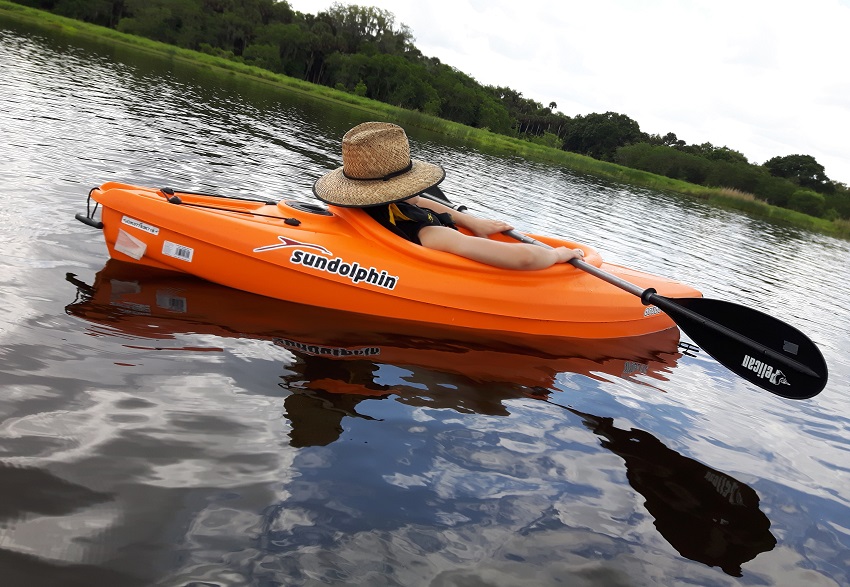
Recreational kayaks are the cheapest of the hardshell kayaks on the market.
Typically, they’re made using plastic (either thermoformed or rotomolded, though the latter is more common) in a sit-inside design. They’re compact, versatile, and great for paddling around lakes, slow-moving rivers, and calm oceans.
Be warned, though: they tend to be the most “entry-level” option around, great for beginners but not the best choice for more advanced kayakers. They’re also built with high primary stability in mind, which means they’re great for flat water, but their low secondary stability makes them less suitable for strong currents and waves.
Recreational kayaks can start as low as $100. On the highest end, you can expect to spend anywhere from $1,200 to $1,800 for premium-quality recreational kayaks.
Here are some examples of recreational kayaks in different price segments:
| Segment | Model | MSRP |
| Budget | Pelican Argo 100X | $299.99 |
| Mid-Range | Old Town Dirigo 106 | $899.99 |
| High-end | Eddyline Skylark | $1,649.00 |
Inflatable Kayak Average Cost
Inflatable kayaks are, no surprise, the cheapest kayaks on the market. You can find them under $100 and get decent quality at that price (from brands like Intex). On the higher end, the price usually won’t cross the $1,000 mark—though, if you’re looking at premier Hypalon boats, you may be able to find a few as much as $2,000+.
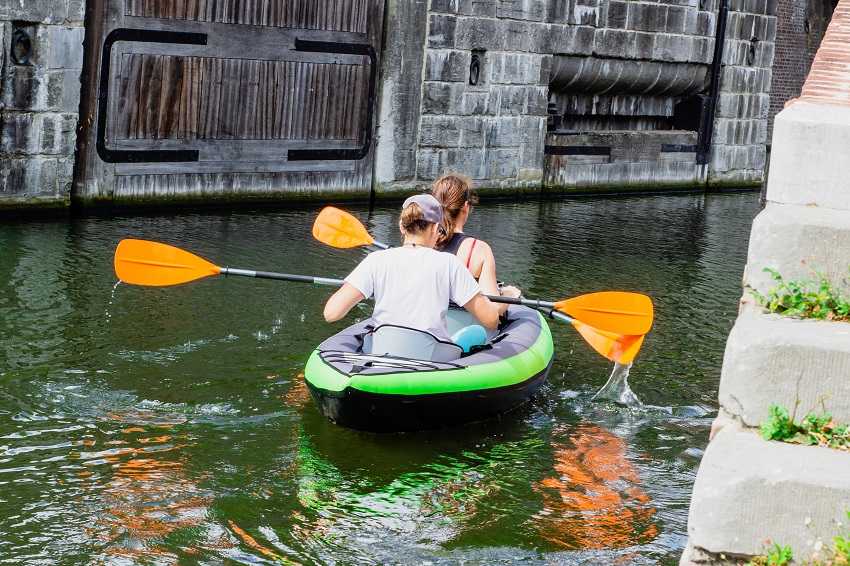
When originally released, inflatable kayaks tended to be of lower quality and far from durable. The cheap-grade PVC and plastic used to build the kayaks broke/ripped easily. Modern inflatables, however, are much tougher and capable of handling more active use. They’re definitely not ideal for whitewater kayaking or ultra-long-distance trips, but you can find a number of options suitable for river and day touring trips.
Inflatables are not only lightweight and amazing portable, but they also float on top of the water’s surface, so they are often easier to paddle and less controlled/directed by a strong current.
Some examples:
| Segment | Model | MSRP |
| Budget | Intex Challenger K1 | $99.99 |
| Mid-Range | Advanced Elements AdvancedFrame | $520.00 |
| High-end | Aquaglide Blackfoot Angler 125 | $1,299.00 |
Fishing Kayak Average Cost
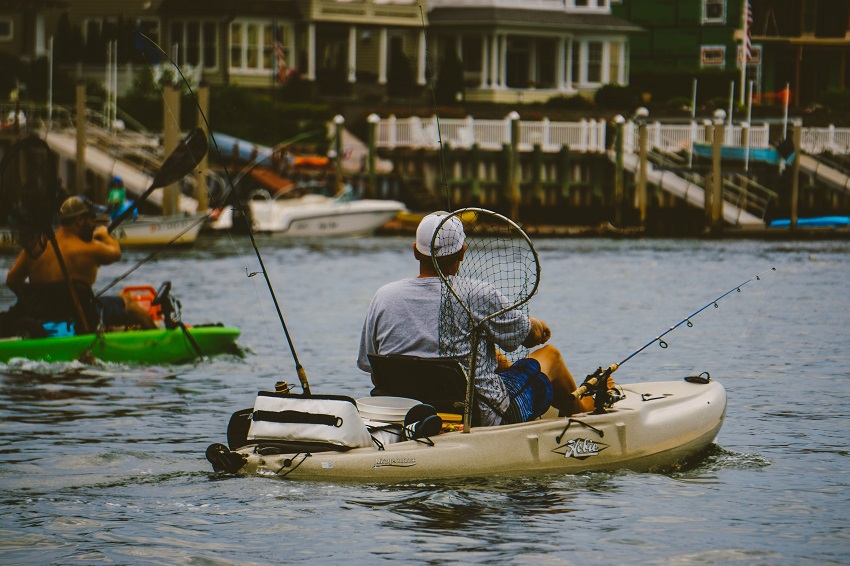
Fishing kayaks come in a pretty broad range of models. The budget-friendly fishing kayaks can start as low as $400 to $500 (barely more than an entry-level recreational kayak), and they’re a great option if you want to try kayak fishing but are not sure if you’re going to like it.
However, fishing kayaks tend to get pricey quickly when you start adding on features — fancier frame seats, tackle storage, gear tracks, a pedal drive, etc. You can easily spend upwards of $1,000 for a mid-range fishing kayak and closer to $4,000 or $5,000 for the really top-of-the-line models.
Bear in mind, though: if you’re going to spend a lot of time out on the water, you may want more features to make the fishing experience more comfortable and efficient. Newbie anglers can settle for a budget-friendly option, but anyone who takes their fishing seriously and plans to get out often on a kayak may want to consider spending a bit more on a mid- or high-end model that offers all the right comforts and conveniences.
Some examples of fishing kayak prices:
| Segment | Model | MSRP |
| Budget | Lifetime Tamarack Angler 100 | $399.99 |
| Mid-Range | Vibe Shearwater 125 | $1,499.00 |
| High-end | Hobie Mirage Pro Angler 14 | $4,449.00 |
Touring Kayak Average Cost
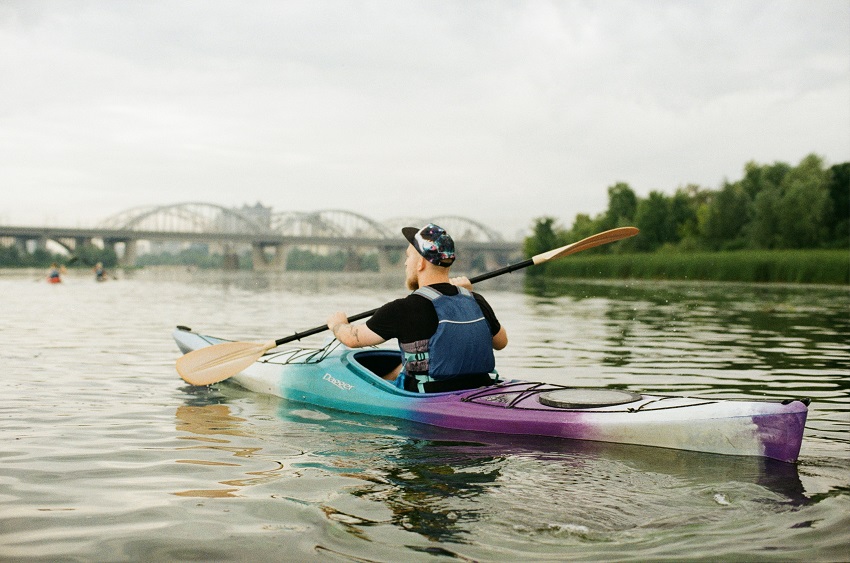
Many kayaks marketed as “day touring” kayaks are just recreational kayaks that have been dressed up fancy. These tend to be more affordable—usually in the $400 to $600 range—and they’re great for a day spent paddling up/downriver or enjoying a trip around a local bay, island, or inlet.
However, the real high-end touring models are better-suited for more adventurous travel. For example, if you’re planning a trip across Lake Michigan (a 16-hour trek) or a there-and-back-again trip to Los Arcos off the coast of Cabo San Lucas.
Typically, touring kayaks have longer, sleeker hulls than recreational kayaks, more storage, and a skeg and/or a rudder. Mid- and upper-range models tend to feature more comfortable seats, adjustable footrests, and other features that make the kayak much more comfortable for an entire day of paddling.
Expect to spend as much as $1,200 to $1,500 for a mid-range day touring kayak and closer to $2,000 to $3,000 for the higher-end models.
Some examples of touring kayak prices:
| Segment | Model | MSRP |
| Mid-Range | Wilderness Systems Tsunami 125 | $1,349.00 |
| High-end | Delta 14 | $1,995.00 |
Whitewater Kayak Average Cost
Whitewater kayaks are built to be small, speedy, and ultra-maneuverable. They have to be both incredibly agile and durable in order to handle the rigors of navigating whitewater rapids.
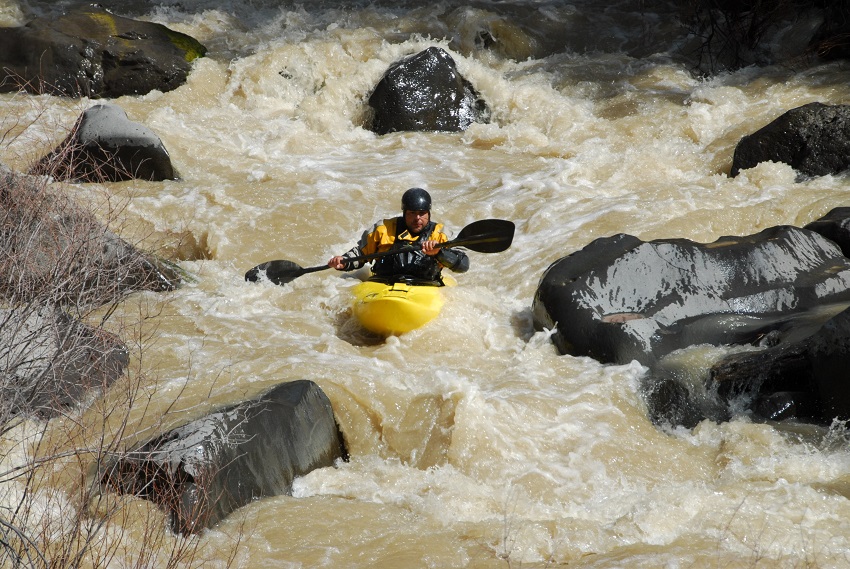
However, let’s be honest: whitewater kayakers aren’t as common as recreational paddlers or kayak anglers. Typically, whitewater kayak manufacturers are catering to a smaller clientele, which means there are fewer offerings, made of higher-quality materials, and thus tend to cost more.
Whitewater kayaks start around $800 to $1,000 for the most budget-friendly models, but won’t usually run you more than $1,800 to $2,000 for the highest-end models. They’re definitely tough enough to take a beating while zipping through rapids and navigating rocks, and they’re usually backed by long warranties that ensure you more than get your money’s worth.
Expedition Sea Kayak Average Cost
If you’re planning a longer adventure out at sea, you’ll want a multi-day touring or expedition sea kayak.
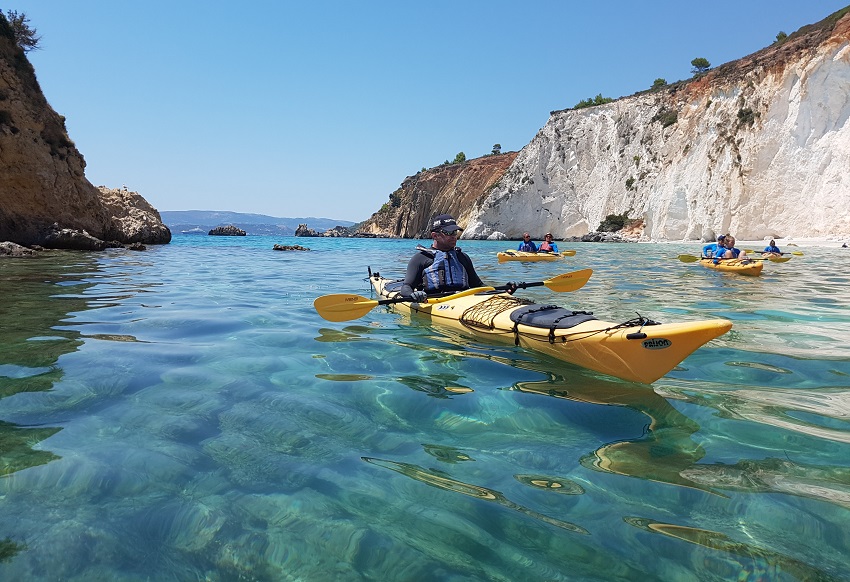
Multi-day touring kayaks are longer and sleeker than day touring kayaks, with multiple internal storage compartments to accommodate all the gear you’ll need for the duration of your trip. Expedition sea kayaks are built with a similar design, though the higher rocker (curvature) means it can handle waves more effectively. Both kayaks track straight and tend to be speedy, perfect for covering long distances.
No surprise, they’re typically the most expensive type of kayak on the market. Sea kayaks start over $1,000 (usually more than $1,500, though you can find a few budget-oriented models below) and rise as high as $4,000 to $6,000 for the true premium-quality models (the ones used by professionals and adventure kayakers).
Tandem Kayak Average Cost
Tandem kayaks are designed for two paddlers to ride at once, which means they are both longer and sturdier than your average single-paddler kayak. Most types of kayaks are available in tandem—even whitewater kayaks—but you’ll definitely end up paying more for one.
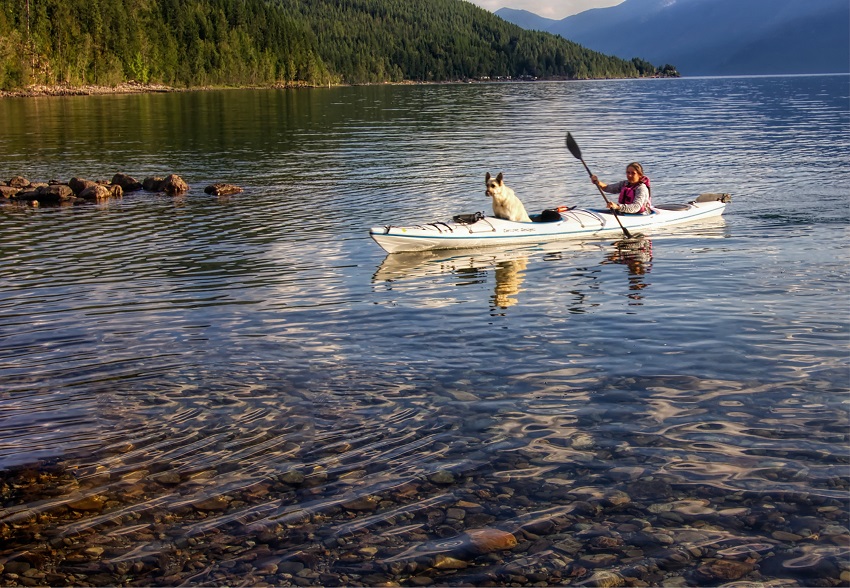
Budget-friendly recreational tandem kayaks will usually start around $500 or $600, and as they rise in quality and functionality, they can go as high as $2,500 to $3,500. The very high-end tandem kayaks used by professionals and adventure racers can range upwards of $5,000!
Kids Kayak Average Cost
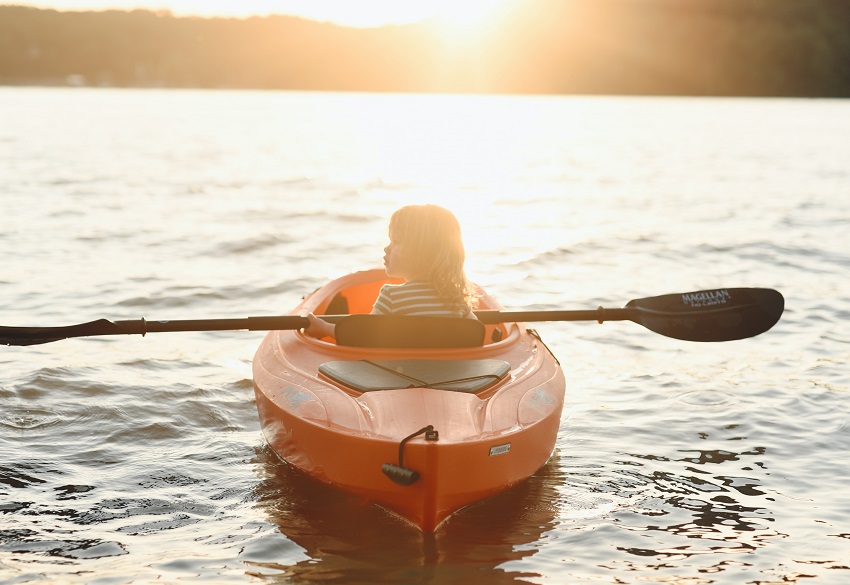
Kids’ kayaks are typically made on the smaller side, either in a sit-on-top or sit-inside configuration. There are high-end kids’ kayaks crafted for youth racers and junior whitewater kayakers, but for the most part, the average kids’ kayak will be as cheaply made as possible so parents will be willing to invest (in what is essentially a floating “toy”) for their kids.
You can find inflatable kids’ kayaks from around $50 to $75, and hard-shell kayaks for kids usually cost between $80 and $200 for the budget models. As the quality and versatility increase, so will the price—upwards of $300 for kid-sized fishing kayaks or upward of $500 to $1,000 for racing kayaks.
You won’t usually find any very high-end models for children; typically, the premium kayaks are sized for teenagers/small adults, not young children. However, they’re compact and lightweight enough that larger children can use them.
Foldable Kayak Average Cost
Currently, only one brand manufactures quality folding kayaks: ORU.
The kayaks are made using ultra-tough polypropylene and rust-resistant hardware. The material is rated for up to 20,000 folds. When unfolded, it’s the size of a standard kayak. However, folded up, it’s small enough to stick it in the back seat of your car or fit it in the trunk.
Their quality is excellent—you can read my review of it here—and they’re very comfortable, well-built kayaks. However, that definitely comes at a cost. The cheapest model (Lake) starts at $785, with the priciest models (Coast XT and Haven) retailing for $2,700. Definitely not the most budget-friendly, but amazing if you’re looking for a portable solution far sturdier than an inflatable kayak.
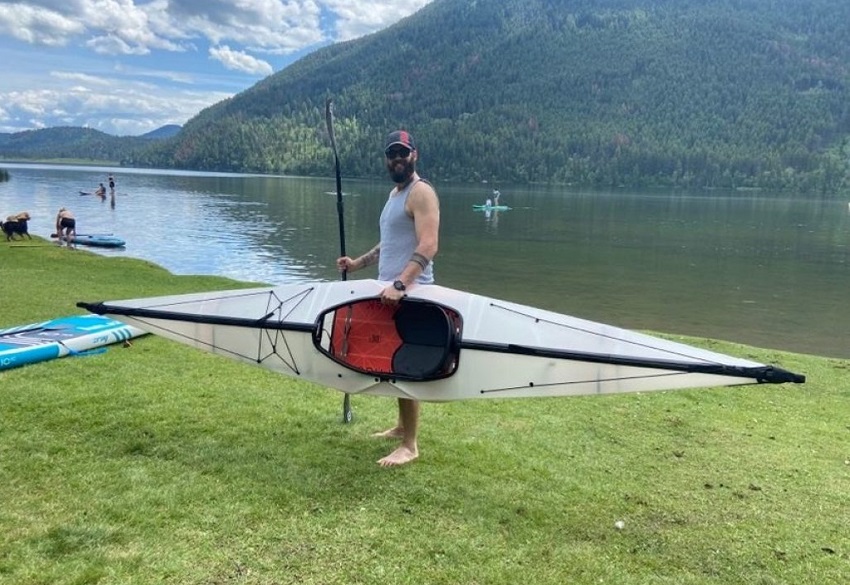
Pedal Kayak Average Cost
Pedal kayaks are often utilized by anglers and hunters who want to reach their destination faster. The pedal system allows you to maneuver the boat hands-free and at much higher speeds than you can manage with just the paddle alone. You’ll find it’s much easier to make minute course adjustments or shift spots without having to pull your line out of the water. It’s also great for dragging a line behind you while moving from fishing spot to spot.
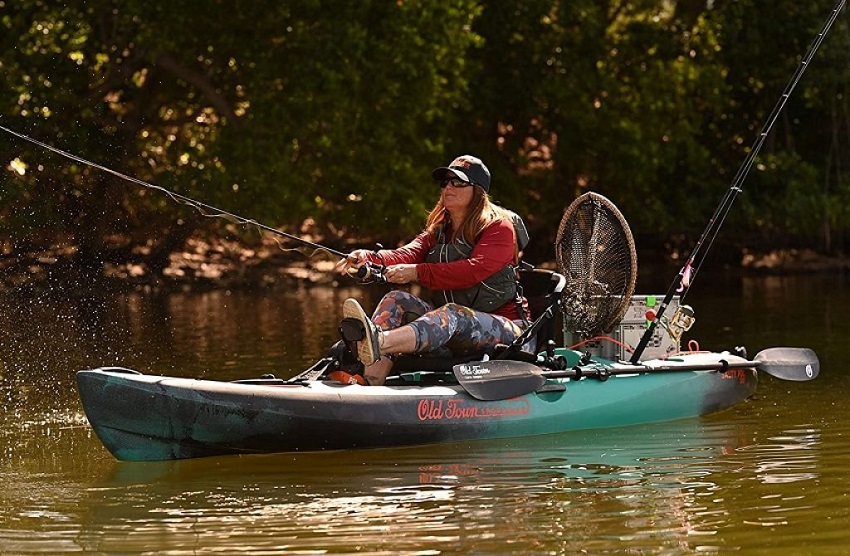
No surprise: pedal kayaks are notably more expensive than basic fishing kayaks. The addition of the pedal drive system requires a level of precision not needed by budget-friendly, basic fishing kayaks.
Expect pedal kayaks to start over $1,200 (probably closer to $1,500), and range as high as $3,000 or $4,000 for the high-end models. Some will run you over $5,000 if they’ve got all the bells and whistles!
Kayak With Motor Average Cost
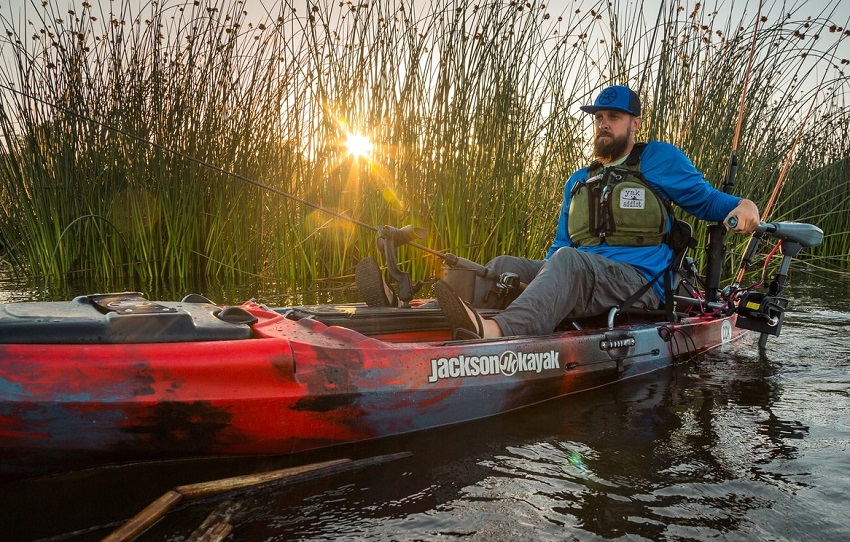
While many fishing and recreational kayaks come with the integrated motor mounts (or the option to include it as an add-on), there are only a few brands that offer motorized kayaks. They’ll either use their own motor or provide a motorized system in compatibility with the popular trolling motor brands.
Trolling motors aren’t particularly expensive—around $250 to $500 for a kayak-sized motor (as you’ll see in this article)—but a DIY install can be pricey for kayaks that don’t come with the mounting hardware included. It may be cheaper to go with a motorized fishing kayak (with all the hardware and motor included from the get-go) rather than starting with a high-end fishing kayak and adding the motor later on down the line.
Buying New vs. Used
There’s a lot to be said for buying a used kayak rather than going brand-new.
If you’re looking for a way to cut costs, buying used kayaks will allow you to get a higher-quality kayak at a lower price. You may not be able to pay rock-bottom, budget prices, and walk away with a top-end kayak (unless you’re a lucky one-in-a-million), but you can still find quality kayaks at a great deal.
(My Real Life Example: I bought a used Pelican Summit 100X for $350 on Facebook Marketplace, but after realizing it was too small for my huge size, I posted looking for an exchange for a size up. Someone contacted me about swapping for a $800 Azul Riot kayak (no longer available, older model), and the deal was struck! I walked away with a much better kayak than I would have bought brand new.)
However, remember that when you buy used, you’re buying used. Some paddlers take excellent care of their kayaks, so you have high-quality sports gear in near-new condition. Sure, the model may be a bit outdated, but it’s still in amazing shape.
Some paddlers use and abuse their kayaks and let it bang into rocks, trees, and underwater obstacles. They’ll let the kayak hull grind on the rocks, shore, or sand, which wears away at the bottom of the kayak. This type of used kayak isn’t ideal because the kayak may be in worse shape than you realize.
If you’re thinking of buying a used kayak, make sure first to read our complete guide so you understand the pros, cons, ins, and outs of how to evaluate, test, and ultimately settle on a used kayak in the best possible condition at the best possible price.
Don’t Forget a PFD and a Paddle!
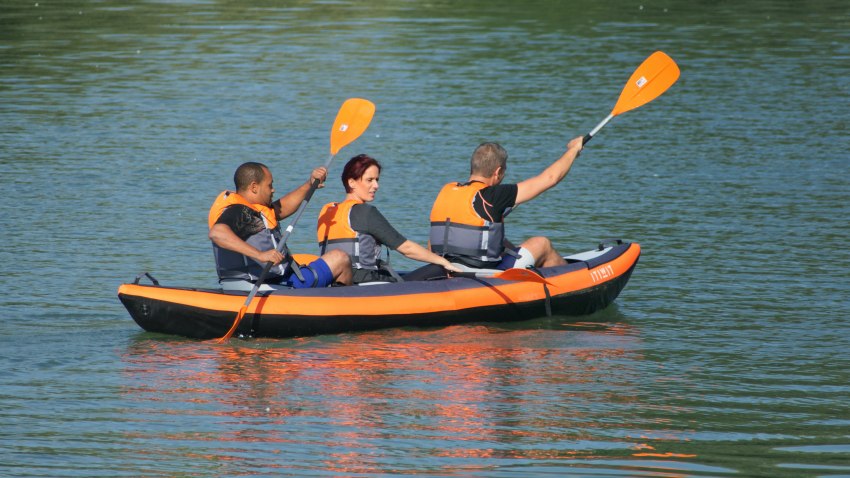
The kayak itself is just the first thing you need to buy before you head out on the water.
It doesn’t matter how fancy or cutting edge the kayak is—if you don’t have a paddle, it’s going nowhere, and you’re legally required to have some form of PFD (typically U.S. Coast Guard approved) on board when paddling on rivers, lakes, or the ocean.
You can find PFD in a wide range of costs—as cheap as $50 to $100 for the budget-friendly options, and up to $500 for top-of-the-line PFD with all the fanciest bells and whistles on the market.
Paddles are also available at a wide range of costs. On the low end, you can expect to spend around $100 for a decent-quality paddle that will serve you well in lakes, rivers, and the ocean. However, if you’re going for more adventurous kayaking trips—such as whitewater kayaking, multi-day touring, or sea expeditions—you will want a specialized, higher-end, more durable/versatile paddle. Expect to spend upwards of $150 or $200 (even as high as $400 or $500) for a premium paddle.
You’ll be glad to know we’ve got a number of articles that can help you find the perfect paddle for your needs.
- The 10 Best Budget Paddles will help you choose among the more affordable options.
- The Best Kayak Paddles for Beginners is a primer for kayaking newbies who want to know how to size and fit the right paddle for their first water trip.
- The Best Kayak Paddle for Fishing is ideal for anglers looking for paddles built specifically for use with fishing kayaks.
- The Best Whitewater Kayak Paddles is a guide to help you find the ideal paddle for your whitewater kayaking adventures.
- And, for those who are just taking their first forays out onto the water, it’s worth taking the time to read over the How to Paddle a Kayak article, which will teach you all the basic strokes along with a few more useful advanced tricks.
FAQs
If you’re new to kayaking, renting a kayak is a great way to experience the thrill without investing in a kayak and gear first.
Typically, rental prices vary from state to state and destination to destination. However, you can expect to spend anywhere from $20-40 per hour to $50-$300 for a full day. You may be able to find cheaper rental prices if you’re taking part in a guided tour.
Every brand has its warranty specifications, but they will vary from brand to brand.
The higher-end brands will all offer longer warranties (5-20 years, even some lifetime warranties). Brands that offer mid-range and budget-friendly models usually offer warranties of varying lengths—anywhere from 180 days to 5+ years.
It’s always worth doing a quick Google Search for any warranty details before buying any kayak. You may find that spending a few more bucks on a different brand gets you a kayak covered by a significantly better/longer-lasting warranty, which means more protection for your kayak.
You don’t! If you only plan on recreational activities, you can stick with a budget-friendly recreational kayak. The same is true for anglers who only occasionally plan to go kayak fishing—fishing kayaks can be inexpensive without feeling cheap.
That being said, if you plan on taking your kayaking to the next level or getting serious about it, it may be worth investing in a higher-quality kayak that lasts longer and is better suited to whatever sport or activity you intend to engage in.




